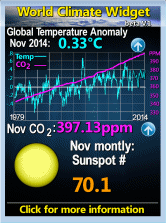 The recent pop in crude oil has been somewhat surprising, but it looks on track to test lower levels. For one thing, one of my sources checked into why it popped up in March-May, right into our Fibonacci zone close to $115, and concluded that it was largely based on futures contract trading, spurred on earlier this year by conflicts that raised concerns of shortages. However, as these futures contracts come due and/or are rolled forward, those conflicts don't seem to have the same urgency. And furthermore, it seems that OPEC may actually increase production programatically for the first time in many years.
The recent pop in crude oil has been somewhat surprising, but it looks on track to test lower levels. For one thing, one of my sources checked into why it popped up in March-May, right into our Fibonacci zone close to $115, and concluded that it was largely based on futures contract trading, spurred on earlier this year by conflicts that raised concerns of shortages. However, as these futures contracts come due and/or are rolled forward, those conflicts don't seem to have the same urgency. And furthermore, it seems that OPEC may actually increase production programatically for the first time in many years.Looking at the daily chart, however, we do see that the StochRSI indicator shows strength. Does it mean that technically, the oil price may break higher? Not so fast. First, price is still within the trading range as I've marked onto that daily chart. It's still below that resistance of the upper line of the range. Therefore, by becoming overbought within the range, it can be set up to be vulnerable to the next round of selling. The longer-term cycles and the monthly chart indicators suggest that crude oil is more likely to go into another wave down, testing toward and possibly under the $90-91 area (even as low as $85 as discussed in my prior posts).
Additional fundamental considerations include that only about 12% of long positions in oil recently seem to have been held by those actually intending to use the oil, while the majority of long positions have been held by speculators trading the futures ("I'm shocked - shocked - to find gambling going on!" - Casablanca (the movie)). If those speculators have been doubling up on bullish bets, that could actually be a contrarian reason to remain bearish on price. And there was news today that oil imports have been decreasing, with the amounts imported during April at their lowest level since October. See Trade Deficit in U.S. Unexpectedly Narrows as Oil, Auto Imports Decrease - Bloomberg, 6/9/2011. Of course, the summer driving season will be watched closely for clues whether usage really is declining, and whether it's merely a reaction to price or whether something more bearish is happening within the economy itself.
It would take a move above the $106-107 area in $WTIC for crude oil to regain a bullish posture. And let's not forget that on the really big picture (see again, monthly $WTIC chart below), the early May rise to almost $115 represented a test of the Fibonacci 70.7% retracement that typically accompanies a mere re-test (such as a "wave 2 in Elliott Wave terms) toward a price extreme (in this case, the $148 peak), prior to resumption of the move away from that extreme. In this case, it suggests that oil may be in a very large-scale downtrend - nothing I want to stand bullish against, unless price truly proves otherwise. So as I tweeted recently, I remain bearish on oil considering all these circumstances.
PS: 6/10/11 - I've added a point & figure (P&F) charts for $WTIC, at the bottom below. It shows that price already hit the $106 price target. That's got to be concerning for bulls, because it hasn't generated a new higher target, while it's vulnerable now to profit-taking and selling to either test lower support or create a trend reversal signal. Neither has happened yet. As I've stated, I'm tilting to the side of expecting either a deeper move down, or a trend reversal that can be even more bearish.








No comments:
Post a Comment